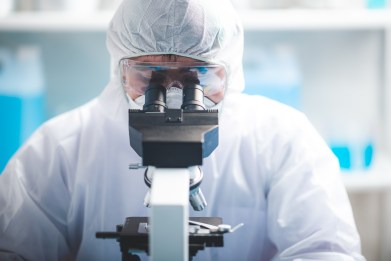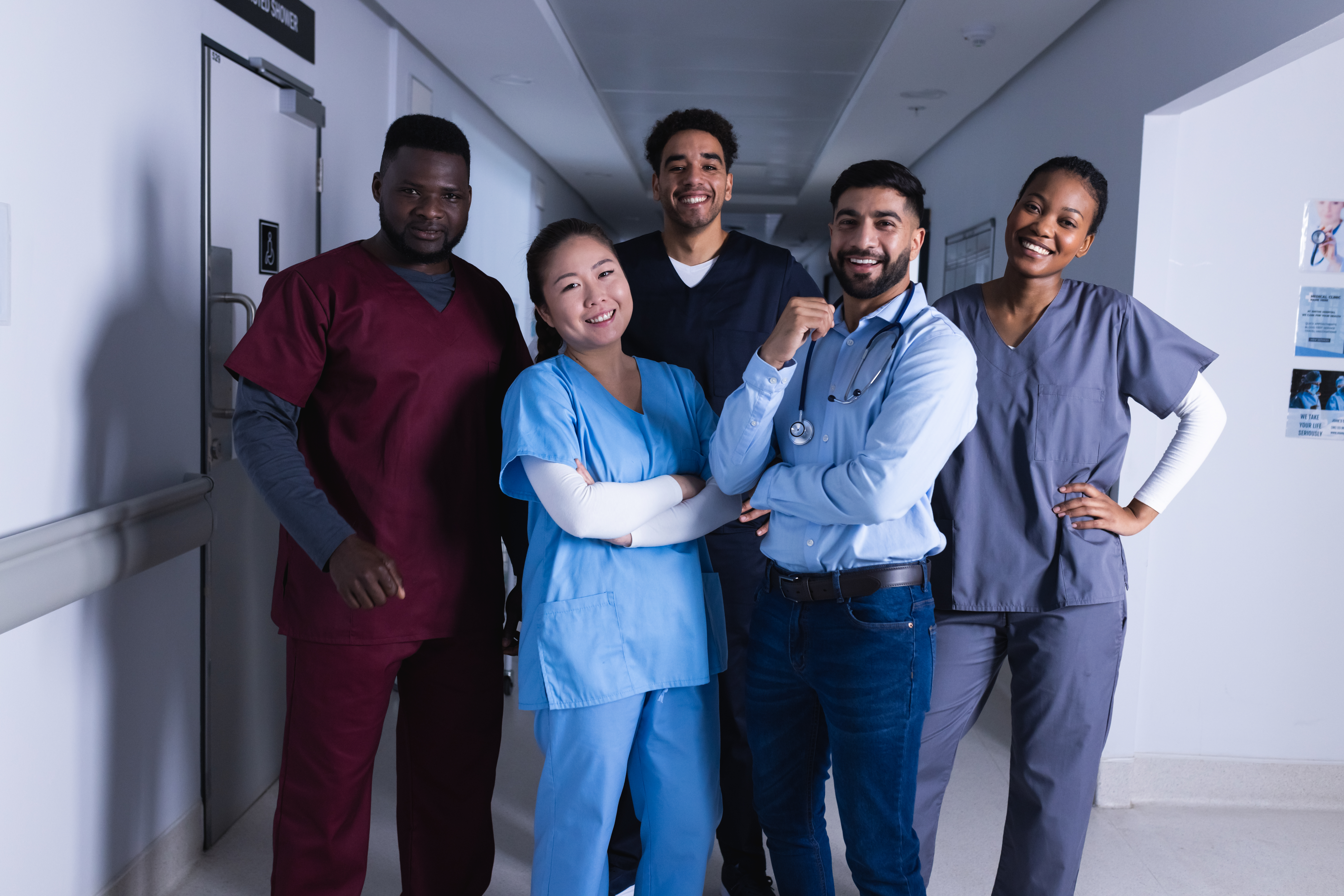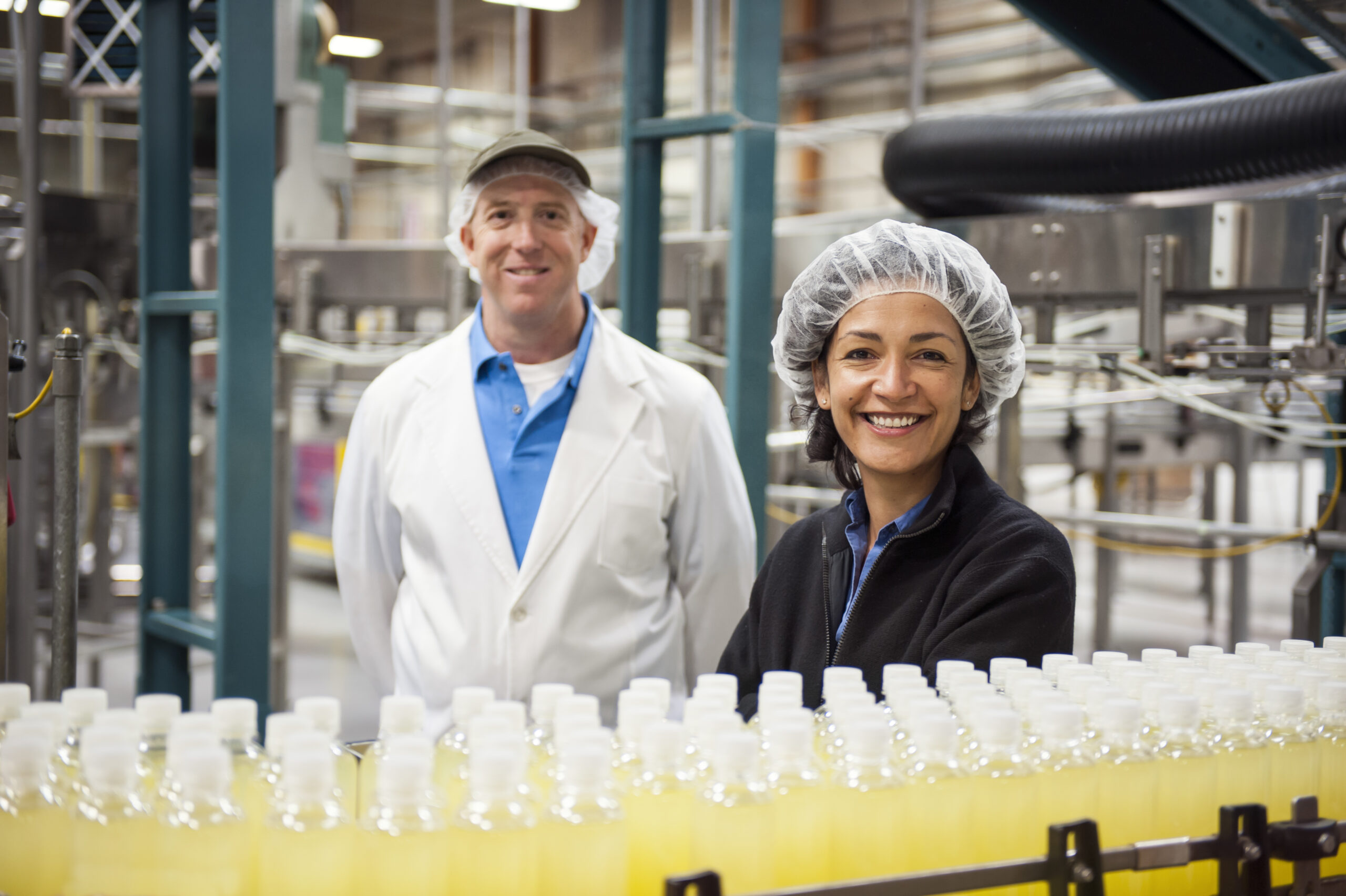The world as we know it has changed because of the COVID-19 pandemic. We’ve adopted and embraced new technologies at a much faster pace in order to conform to these changes. Simple examples include the increased popularity of food delivery apps and at-home meal kits, but in the larger picture, the nature of working has changed entirely for many companies and people.
For example, the use of video conferencing apps for daily meetings or relying more on shared spreadsheets to keep track of work and chatting via online messaging platforms has become a norm in many people’s lives.
However, some companies still had employees going into their place of work due to the nature of their jobs. Life science workers are one of the most common areas of work that could not eliminate all visits to the office or lab during the COVID-19 pandemic.
Some scientists and researchers have been visiting their workplaces during the pandemic. Therefore, companies and organizations have had to make further changes to their daily routines to ensure their employees are safe and happy.
Additionally, these life science companies are now trying to find the new normal for many of their employees to accommodate the new lifestyle they have embraced.
So, what will work look like in the life sciences as we emerge from the pandemic? Xtalks spoke with two HR professionals to find out how companies are handling the transition from a work-from-home policy to a hybrid or back-to-work model.
How Have Companies Dealt with These COVID-19 Mandates?
Yvonne Gwinnell, the senior manager of talent acquisition at Ultragenyx, which is a biopharmaceutical company involved in the R&D of novel products for the treatment of rare and ultra-rare genetic diseases, shared some of the initiatives her organization took to implement workplace changes with their employees.
“We just did an employee survey, and there were three categories that employees could consider and have conversations with their managers about. The first option is going back into the office full time; if folks are comfortable with that, then you have 100 percent remote, or flex, which means going into the office two to three days a week,” she says.
“If someone, like myself, for instance, decided that I wanted to be remote, I would have that conversation with my manager. And then it does need a final stamp from our leadership team, too,” she adds.
Ultragenyx has directly asked each employee how they would like to proceed post-pandemic rather than making a companywide decision.
There is a lot of competition in the life sciences field, and companies are working hard to keep their employees happy to retain key talent. Gwinnell says that the competition is high, and the rare disease and ultra-rare disease industry is a particularly hot market.
Usually, when an employee leaves Ultragenyx, it’s to pursue a more senior position, she added. Therefore, the company did not want to draw a hard line when deciding how to proceed with going back to work because they did not want to lose valuable employees over reasons that could be easily accommodated.
Gwinnell says that hiring has been an ongoing process during the pandemic, with some changes of course. Before the pandemic, Gwinnell traveled with a diverse interview panel and visited the cities they were hiring in. Now, they’ve gone from face-to-face hiring and transitioned to Zoom calls as their hiring processes continued.
Nevertheless, when Xtalks asked Gwinnell how she felt about the new model of hiring, she said, “I’m a people person. I love people. I love hearing their stories and meeting with them. So, for me, I miss that. But I like being home. I do have a little one, so not traveling is also okay. I think a switch in your mindset is what is needed to accept the new model of hiring.”
Gwinnell says that the new process may take longer to close a role because it might involve more back and forth conversations. Additionally, finding someone the hiring manager feels comfortable with having on the team could be more complex because it is done over a phone call, email or video conferencing platform rather than in-person interaction.
Related: Mattel Introduces 6 Women in Science Barbie Dolls to Inspire Next Generation Girls
Xtalks also spoke with Phillip Dana, the vice president of human resources at Dendreon Pharmaceuticals, about hiring during the pandemic, and he agrees with Gwinnell. He says, “The hiring [process] pre-COVID was fairly traditional — get folks on-site, if possible. Then, of course, we had several remote roles as well. But we certainly shifted heavier to using Microsoft Teams and Webex, and we came to grips with the fact that not everyone can find a perfect calm and quiet environment. And so, your expectations of the quality of the interview needed to shift, and the speed.
COVID helped the life sciences sector because it showed the world the importance of science and its added value to society. Many companies have expanded since COVID but also a lot of new companies have risen.
“Honestly, our sector in life sciences, specifically, is hyper-competitive. So COVID lifted our sector, certainly. It gave a lot of opportunities; a lot of new companies came fast. And so those of us who had been in it for over ten years, we had to fight to get the great talent and to keep the great talent,” he adds.
At the start of the pandemic, Dendreon was already in the process of a cultural transformation where they had remote and flexible work options available to remain competitive in a developing sphere. Furthermore, they did not close they operations when case numbers were on the rise because, “cancer doesn’t really care about COVID, and so we stayed operational. We stayed open. Over two-thirds of our employees continued to come to the site,” Dana says.
 During this time, they have complied with all measures to keep the workplace safe. This includes, but is not limited to, issuing extra protective gear, hand sanitizer stations, social distancing marking, the removal of half the chairs, and more.
During this time, they have complied with all measures to keep the workplace safe. This includes, but is not limited to, issuing extra protective gear, hand sanitizer stations, social distancing marking, the removal of half the chairs, and more.
To keep up with the guidance from the Centers for Disease Control and Prevention (CDC), the state and local health agencies, they had to create a task force that included members all the way up to the CEO. Dana says that they “would meet three times a week and assign different folks to monitor all the different communications streams that were coming in, especially as a national employer, and make some pretty fast, impactful decisions. And we’re continuing to do so.”
“We are going into the second half of the year, and with the Delta variant, the masks are coming back into question. ‘Are we going to have to put masks back on now, or not?’ That’s the big question. Here I am in Seattle, traveling without a mask. And so, we’ll see what happens,” he continues.
The reality of their operations did not change, but what did change was their logistics and supply chain. There were disruptions in courier services, lack of staff and canceled flights, all of which caused difficulties in getting blood or biologics from the patient to the manufacturing plant, and vice-versa.
Nevertheless, as part of Dendreon’s larger plan, they hoped to compete as a pharmaceutical company in a saturated market by leveraging their working culture. They had strategies that entailed maximizing the use of tools like DocuSign and bring your own device (BYOD), being more remote, and staying plugged in. However, COVID-19 had accelerated their cultural transformation plan, and they began their journey in March 2020.
Interestingly, Dana told Xtalks that even though many younger and more technologically savvy employees were on board for a work-from-home or flexible workweek, those who were part of an older generation, were not.
The question is, are we beginning to discriminate against older workers if work-from-home continues post-pandemic? Currently, they are becoming the larger demographic as the age of workers increases. However, the older workers are used to working their Monday to Friday, 9 am to 5 pm job from the office, with various social interactions and limited use of technology — depending on the job — but they are now being asked to work remotely most of the time.
“I think a lot of the cool stuff that’s being featured is very centered towards younger generations. But if you’re an older worker, how do you feel about all this?” asks Dana.
“You really do miss a lot of the cultural pieces, from physical touch, having a team lunch together, that kind of connectivity. And so, when you’re trying to start a company, fix a company, or add a company, I’m not in full agreement with some of the trends. And I don’t know about you, but I’m kind of burning out on everything [being on] Zoom,” he adds.
What Can We Gather from These Experiences?
The life sciences is a unique field in terms of its pandemic response because companies could not fully shut down due to the nature of their work. During the pandemic, companies had to work hard to make sure employees were supported, facilities were following health and safety guidance, and employees were able to complete their tasks from wherever they were working.
The nature of the hiring process took some adjustment and time to reorganize, but now, more than ever before, the competition is high. Companies are working hard to keep good talent within their organization but also to recruit the best employees for their businesses.
Scientists and researchers have already begun experiencing and living the hybrid model of work that many companies in all fields are now exploring. Therefore, one thing we know for sure is that COVID-19 has changed the way many companies have operated for decades and is accelerating the speed at which we approach a technology-focused future.












Join or login to leave a comment
JOIN LOGIN